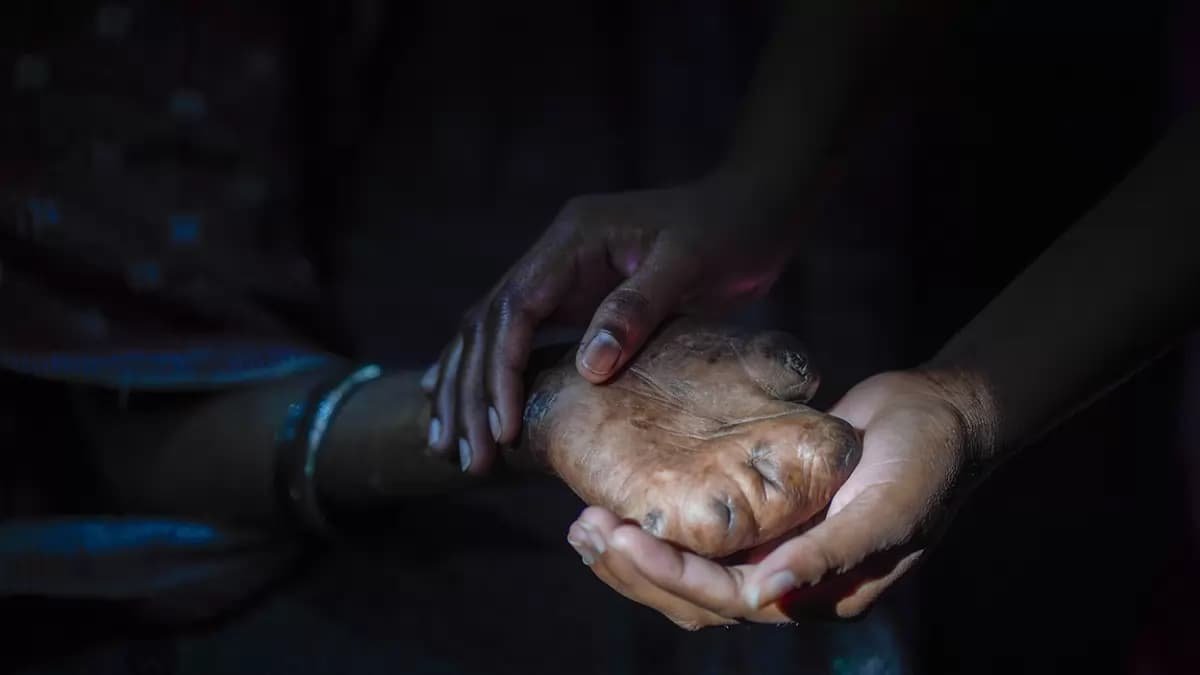
Leprosy is one of the oldest diseases known to humans. Despite advances in all spheres of medical science, leprosy continues to be a public health issue in Maharashtra. In the present scenario, Maharashtra needs new initiatives, challenges, and future implications for leprosy control.
Leprosy, which was declared eradicated in India one and a half decades ago, has resurfaced with vigour in several states. In the year 2005, India was declared a leprosy-free country, but soon after that, many new cases started getting reported. Major changes were made to the National Leprosy Elimination Programme (NLEP) and the Global Leprosy Programme during that time period. Efforts made under these programs led to the discovery of child leprosy, apart from other new cases. Many of these cases were found due to late diagnosis as well. Such cases arose as a result of the administrative burden and a lack of scrutiny.
India has the highest number of new leprosy cases in the world, followed by Brazil and Indonesia. Every year, over 200,000 such cases are detected globally, and India accounts for more than half of them, according to the World Health Organization (WHO).
The health ministry, along with other institutions working to fight leprosy, has started formulating new strategies to deal with the huge volume of cases. On Tuesday, in the State Assembly, Chief Minister Eknath Shinde assured to form a committee that will make a full-proof plan to counter and control leprosy cases in Mumbai and Maharashtra. However, before formulating new strategies to combat the recurrence of the disease, it is important to analyze and discuss where and what went wrong in our efforts to eliminate it. In the first place, why was leprosy declared eradicated in India? Why have there been more cases since 2016? There are many unanswered questions that need to be answered by the government.
Incompetency, corruption, and a lack of infrastructure are the major reasons why the BMC and health administration in the state failed to eradicate leprosy. A sample survey conducted by the Indian Council of Medical Research (ICMR) revealed that there are many hidden cases in the community. The major cause of hidden cases is low voluntary reporting in the community due to a lack of awareness as well as stigma and discrimination.
The fact that 200,000 people live in approximately 750 leprosy colonies demonstrates the extent of stigma and discrimination. One of the biggest colonies is in Maharashtra, in CM Eknath Shinde’s constituency.
In addition, it was seen that the rate of new case detection had remained almost the same and that disability rates in new cases had been rising due to a delay in diagnosis. The health experts felt that the detection capacity of leprosy programs had ceased compared to the intensity of occurrence. In the past two-and-a-half years, India accounted for 60 per cent of the global total of new leprosy cases. In a recent report, the Central Leprosy Division, which comes under the Union Ministry of Health and Family Welfare, revealed that thousands of new cases were detected only in 2022.
Leprosy was feared as the most contagious disease, but with awareness and study, we now know that leprosy doesn’t spread easily and has effective treatment. If left untreated, it can cause nerve damage, which can lead to crippling, paralysis, and blindness. India has become the leprosy capital of the world in the 14 years since it was declared free of the disease, as a lack of vigilance and unfriendly laws paved the way for its return. In 2019, India will host 66% of all leprosy patients around the world. The prevalence rate dropped to 0.72 per 10,000, reaching 1,35,485 cases in the years 2016–17. However, these numbers have come down to nearly 15,000 cases compared to 2016–17. This is why we need to raise awareness about it and be properly informed about it in order to make India fight leprosy again.
Leprosy is an infection caused by a slow-growing bacteria called Mycobacterium leprae. It can affect the nerves, skin, eyes, and lining of the nose (the nasal mucosa). With early diagnosis and treatment, the disease can be cured. People with leprosy can continue to work and lead an active life during and after treatment. It is an extremely slow bacterium that is very hard to spread from person to person. Prolonged exposure to an infected person only causes leprosy. This usually happens only for household contacts.
Leprosy has been around for over 2000 years. It is far less prevalent today than it was even a few decades ago, but complete eradication still eludes us. Free access to drugs, begun in 1995, has led to a drastic decline in the number of cases. There is a lack of inertia on leprosy, as the combination of vaccination and prophylaxis through personal contacts has been largely but not completely effective at decreasing disease incidence.
In 2000, the WHO declared that the declining numbers had led to the “eradication of leprosy as a public health problem,” which largely deflated efforts to eradicate it entirely. One of the confounding factors for leprosy is that the BCG vaccine, which protects against tuberculosis and leprosy, may also precipitate an earlier onset of latent leprosy. “An unexpectedly high proportion of healthy contacts of leprosy patients presented with PB leprosy within 12 weeks after receiving BCG vaccination.” Clinical manifestations of leprosy after BCG vaccination: an observational study in Bangladesh.
In India and the rest of the world, there has been a tremendous decline in the number of leprosy patients over the past four decades. However, one of the major challenges faced by India is the continued occurrence of new leprosy cases, as evidenced by the almost static new case detection rate (NCDR) over the past decade.

